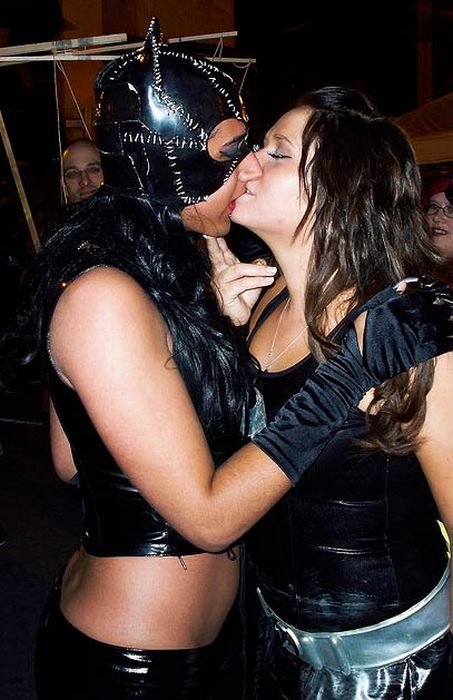|
|
Halloween Girls Kissing
|
The observance of Hallowe'en or All Hallow's Eve combines pre-Christian and Christian traditions. Historian Nicholas Rogers, exploring the origins of Halloween, notes that while "some folklorists have detected its origins in the Roman feast of Pomona, the goddess of fruits and seeds, or in the festival of the dead called Parentalia, it is more typically linked to the Celtic festival of Samhain (pronounced sow-an or sow-in)", derived from the Old Irish Samuin meaning "summer's end". Samhain was the first and by far the most important of the four quarter days in the medieval Irish and Scottish calendar and, falling on the last day of Autumn, it was a time for stock-taking and preparation for the cold winter months ahead. There was also a sense that this was the time of year when the physical and supernatural worlds were closest and magical things could happen. To ward off these spirits, the Gaels built huge, symbolically regenerative bonfires and invoked the help of the gods through animal and perhaps even human sacrifice.
• Christian influences
Depicts apple bobbing and divination games at a Halloween party in Blarney, Ireland.
Halloween is also thought to have been heavily influenced by the Christian holy days of All Saints' Day (also known as Hallowmas, All Hallows, and Hallowtide) and All Souls' Day. Falling on November 1st and 2nd respectively, collectively they were a time for honoring the Saints and praying for the recently departed who had yet to reach heaven. By the end of the 12th century they had become days of holy obligation across Europe and involved such traditions as ringing bells for the souls in purgatory and "souling", the custom of baking bread or soul cakes for "all crysten (christened) souls". It was traditionally believed that the souls of the departed wandered the earth until All Saints Day, and All Hallow's Eve provided one last chance for the dead to gain vengeance on their enemies before moving onto the next world. To avoid being recognised by a soul, Christians would wear masques and costumes to disguise themselves, following the lighted candles set by others to guide their travel for worship the next day. Today, this practice has been perpetuated through trick-or-treating.
|
|









